N. P. Upadhyaya (Aryal)
Biratnagar: Politics has suddenly taken a more dangerous spin with the India trained and indoctrinated sitting Nepal Prime Minister Prachanda’s “presumed” awarding of government’s sanction for the establishment of a Buddha University in the western region that borders Nepal’s Northern neighbor China.
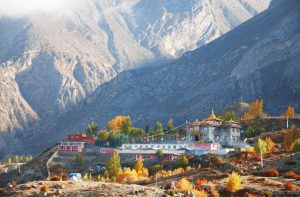
Prachanda, China believes, is a Nepali political personality with excessive India bend.
The proposed University is presumed to be positioned in Nepal’s Mustang region which is a prohibited area declared by the Nepali government some three to four decades ago.
It was made or say declared a prohibited area keeping an eye to the Chinese sensitivities.
Remarkably, Mustang is an expanse in Nepal which is considered as a very susceptible area both by Nepal and China.
Ambassadors from the European countries posted in Nepal unfailingly visit Mustang under some pretext or the other.
It is because during the reign of the slain King Birendra, some “Khampa rebels” had tried their best to foment troubles to the Chinese government in Beijing by hitting the Tibet autonomous region of China presumably by Dalai Lama supporters.
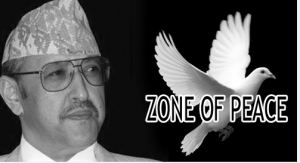
It was this Mustang area from where the Khampa rebels had poked China.
Later, King Birendra ordered the Nepal Army to tame the rebels and the Army did the assigned task.
To recall, the Dalai Lama at the end of the sixties had sneaked into India crossing the mighty Himalayas and since then the successive Indian governments beginning Pandit Nehru to PM Modi have been using the Dalai Lama as a “card” to tease and tame China.
Notably, the Indian Prime Minister Nehru had assured Premier Chou-en-Lai that India henceforth recognizes Tibet as an integral part of mainland China.
However, the successive governments in India after demise of Nehru have ignored Nehru’s commitment made to China and instead teasing China as and when they find a suitable opportunity.
Needless to say, Tibet constitutes an element that distances both China and India with each other and even brings face to face at times.
China says India brings into use the Dalai Card as and when India feels threatened by China and needless to say, India refutes the Indian accusations.
The fresh talks on the establishment of a Buddhist University in Mustang area, if true, then it may bring both China and India for sure to “fierce confrontation” in Nepal.
Beijing sources in Kathmandu opine that the news of the establishment of a Buddhist University in Mustang and that too with the Indian funding does tell that the entire “great game” is being played by the two strategic partners of the Quad security apparatus designed primarily by the United States of America in order to “contain” China from Nepal.
The US though refutes these charges.
To recall, in the recent years and months, both India and the US in their own way have been trying their best to secure for themselves a spacious legroom in Nepali politics so that the Nepal’s national politics could be influenced in a meaningful and substantial manner suiting to their respective political interests.
The Ambassadors of India and the USA have given of late an added momentum to their diplomatic activities in Nepal.
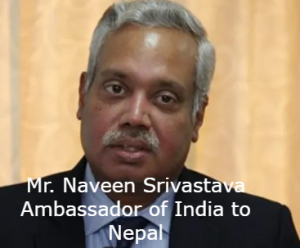
Navin Shrivastav (India) and Dean R Thompson(US) could be seen rushing to meet key Nepali leaders.
In the previous decades, India used to overwhelm Nepali politics. Some even say that it is India and India alone that “controls” Nepali administration including the foreign policy even as of today.
The fresh trip of Indian Foreign Secretary Binaya Mohan Quatra was to “nominate” the new President for Nepal.
No wonder that Ram Chandra Poudel was declared the Nepali Congress nominee for Nepal President soon after the Indian foreign secretary left Kathmandu for Delhi. This must have some meaning underneath.
Comparatively speaking while the US is a new comer for Nepal, then China is present in Nepal since long but with its weakened and defeated diplomacy in Nepal.
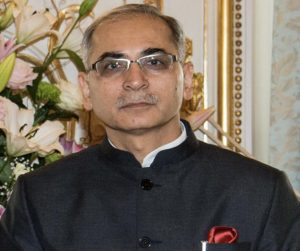
The Chinese “lobby” in Kathmandu perhaps runs under the instructions of the Indian mission in Kathmandu, it is widely believed in Nepal.
Some double agents are befooling mini-China in Kathmandu.
Thus Indian diplomacy remains unchallenged in Nepal. China and the US can never brave Indian position in Nepal.
India had made deep inroads in Nepali society from the political to the media domain.
Thanks the RAW funding scheme.
China became the permanent loser the day it in collusion with India settled to do away with the institution of Nepali monarchy once and for all.
To recall, it was the monarchy that had kept both India and China at an equal distance based on its wisely formulated “equi-distance” theory that treated both the immediate neighbors equally.

The new comer as compared to China and India, the US yet is seen very active in the recent months and years with the advent of the Millennium Corporation project, MCC, in Nepal and it remains now no longer a secret that the US too like India prefers to have a overbearing role in Nepal’s internal politics.
But can the US compete with India in Nepal? Perhaps never.
South Asian journalist turned politician of Pakistan, Senator Mushahid Hussain had some four years ago at a Nepal Council of World Affairs (NCWA) program held in Lalitpur had explicitly told the NCWA gathering that “bids were afoot” to contain China worldwide.
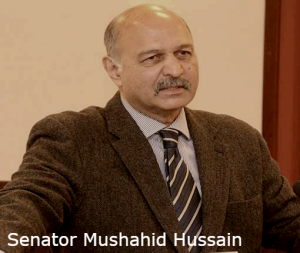
Senator Hussain even had predicted that Nepal could be the most likely venue for the interested super powers to attack China through Tibet-the underbelly of China.
China’s Tibet adjoins Nepal’s northern borders.
Nepali intellectuals opine that if on the question of teasing and containing China, the US and India are on the same page then India would concurrently wish to distance the US in increasing its influence in Nepal at the cost of curtailing the continuing domineering role of the Indian regime in Nepal.
A clear message to the US has already been aired by India to this effect when three Indian scholars on November 16, 2022, wrote an article wherein they have collectively told the US not to cross the limits in Nepal.
The article by Indian scholars clearly states that “the US is advised not to cross the confines as defined and desired by the Indian regime” for Nepal.
Read in part the article mentioned above: “India welcomes the United States’ engagement with Nepal, as long as such dialogue between Kathmandu and Washington either promotes New Delhi’s interests or promotes the interest of either party without causing harm to New Delhi’s interests in the region”.
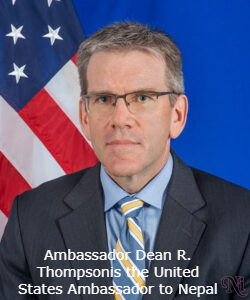
This clearly speaks of India’s strong desire not to allow Nepal to slip from its hands even to the US-its strategic partner in the Quad then what India could have in its mind for its nearest enemy China with whom India has fought several mini-scale wars?
Having said that, yet China and India are on the same page on the revival of the defunct monarchy as both in some way or the other wish to keep the super power US at a bay.
By the way, China and the US are not in working terms of late and thus China too would not wish the US to allow spacious legroom in Kathmandu as against its own.
It is this US factor that has brought both China and India closer to some extent.
But yet this should not mean that they have shelved their enmity for good. No. It is not that. The India-China border still remains in a tensed state.
The talks of the establishment of the Buddha University in Mustang with Indian endowment is a new nuisance for China.
China would wish with its weak and defeated diplomacy to halt the establishment of the Buddha University in the prohibited are where, as the rumors suggest, an ore of Uranium has been found.
Some even say that it could be this Uranium Ore which may have prompted both India and the US to approach the Mustang region to take control of the precious mineral.
If the Nepal government grants permission to India to open the Buddha University then what is equally for sure that this time China will not settle for less than sending a strong contingent of Chinese military force in that area inorder to provide security to its own area in Tibet that adjoins Mustang.
In the meanwhile, the Prachanda led Nepal government claims that it has so far not awarded permission or whatsoever to India for the establishment of the much publicized Bouddha University.
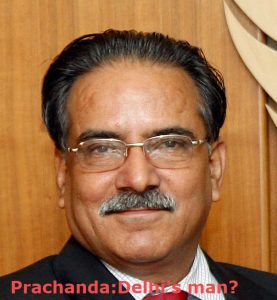
Issuing a release to this effect, the Nepal Government says that the allegations made by ex-PM Oli are false and baseless.
The press statement further states that the government has not awarded any approval for the establishment of a Buddhist University in an area that is close to the Tibet Autonomous Region (TAR).
Former Prime Minister K. P. Oli says that Nepal Prime Minister has made a blunder by annoying China to please India.
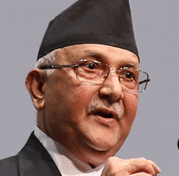
“It is unacceptable”, says K.
P. Oli.
Oli too is presumed to be an India hand, however, he is seen siding with China when not in power.
Or else, former PM Oli is supposedly more Indian than Indian Prime Minister Modi himself.
Oli’s secret meet with the RAW Chief Samant Kumar Goyal remains no longer a secret.
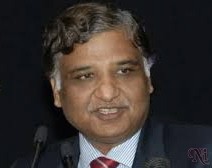
In all, the talk of the establishment of Buddha University in Mustang has heralded a new dangerous political drama in between the three competing powers, India, the USA and China.
The antagonism of these three powers shall increase in the days ahead say informed sources.
All these threads put together what is for sure is that Nepal has already become a football ground of the US, India and China.
When elephants dance, it is the grass that feels the brunt.
The entry of the Russian federation too is being talked though it is for the revival of the deposed monarchy.
Some speculate that the Russians too along with India and China wish the resurrection of the monarchy in Nepal for their own individual and collective interests.
For sure, Russia, India and China have a common interest in and that being to distance the US from Nepal.
For the record, China and Russia have come excessively closer since the Ukrainian crises.
Draw your own conclusions. That’s all.
# This article was first published in the online edition of the Himalaya Times on March 09, 2023: Ed. Upadhyaya.
